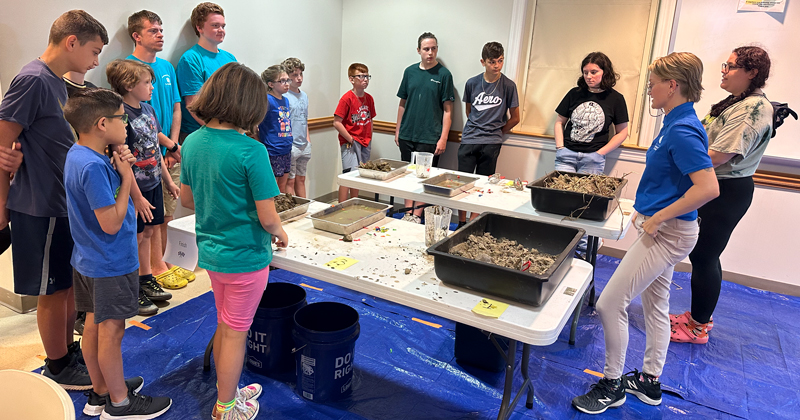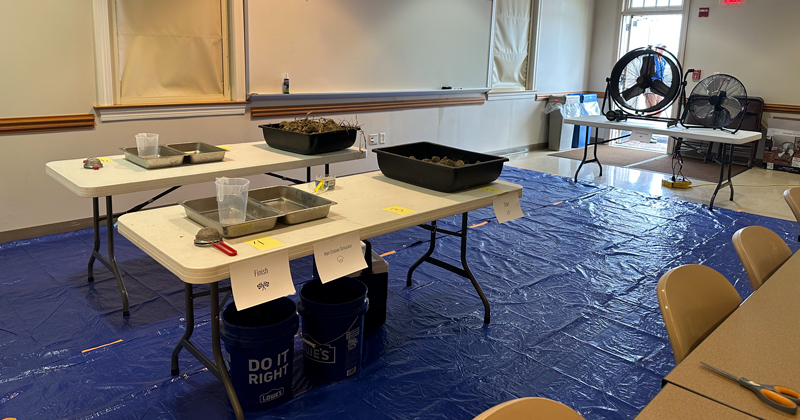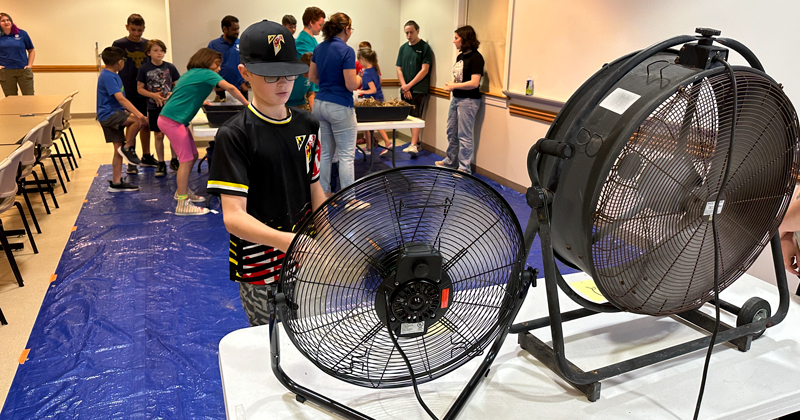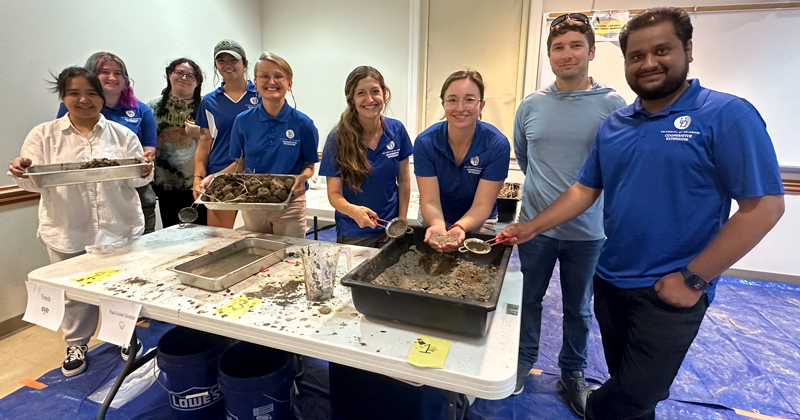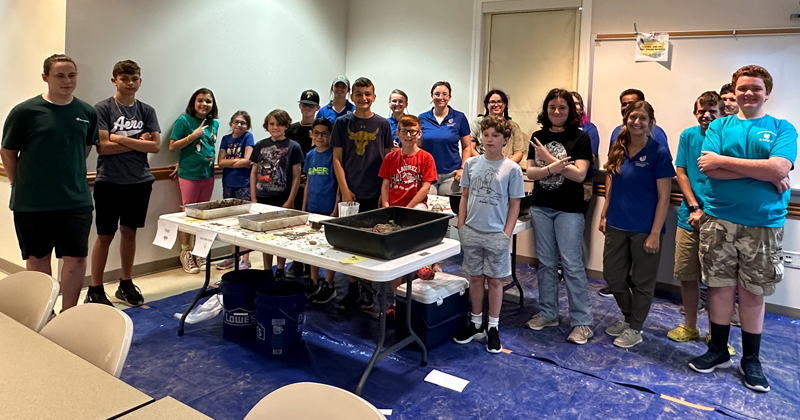

4-h camp at UD's Carvel station in Georgetown: youtube.com/watch?v=WBH0eS2eIsY
Cover ‘cropstacle’ course
Photos by Carvel Center Staff | Video by Owen Pusey and Michele Walfred August 16, 2023
Local 4-H campers weather a simulated storm at the UD Carvel Center in Georgetown
Relay races, water balloons and obstacle courses are summer fun activities for any child. But, at this summer’s Experience Extension 4-H Day Camp at the University of Delaware Elbert N. and Ann V. Carvel Research and Education Center, these tried and true summer staples morphed into a windy, wet crop ‘cropstacle’ course. Intrepid young campers enjoyed weathering the storm.
The unique, hands-on day camp experience served as a clever way to convey why local farmers plant cover crops in the first place. Including cover crops to planting rotations improves the quality of soil health, achieves better yields in food production and contributes to a healthier environment overall.
In the camp’s fifth year, Alyssa Koehler, assistant professor and extension specialist in plant pathology, turned to her team to unleash its creativity. Graduate students, undergraduate students and interns designed and mentored STEM activities suitable for young 4-H campers.
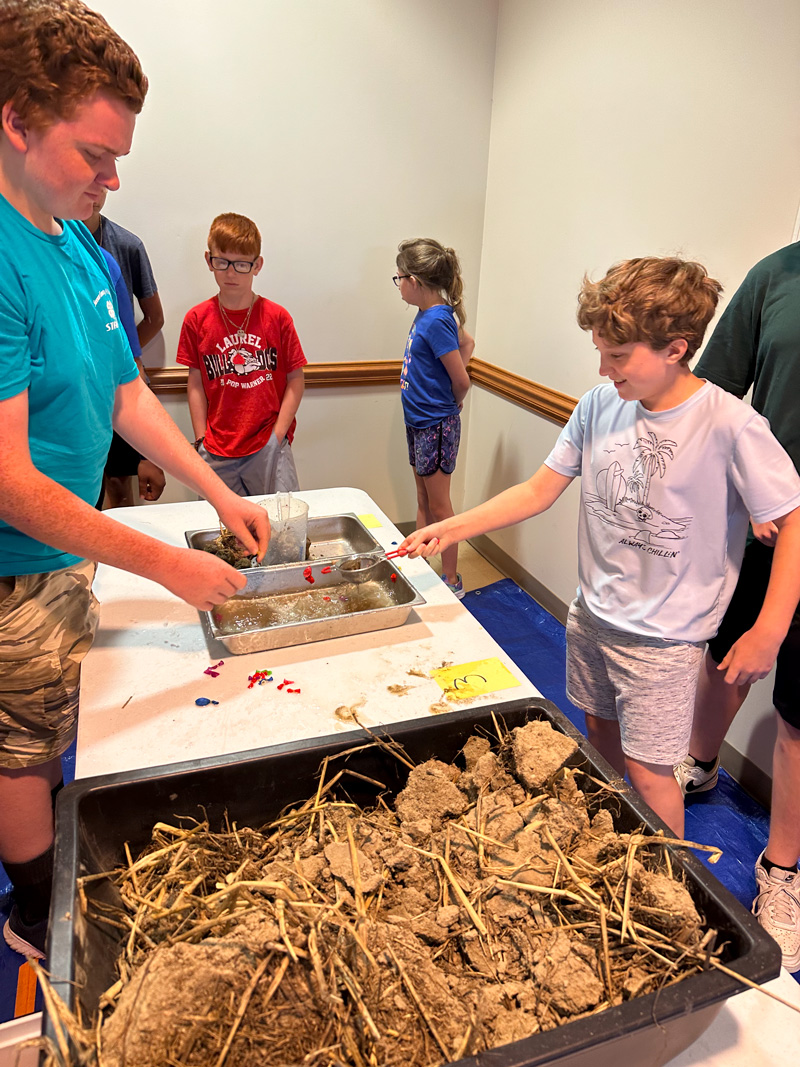
In the past four years, 4-H campers studied plant genetics, swabbed for and cultured organisms in Petri dishes, built microscopes and extracted DNA from strawberries. How do you top that? By simulating extreme weather conditions, of course.
Koehler’s team aligned this year’s camp activity with actual field research conducted by her cohort. Koehler serves as the principal investigator for a U.S. Department of Agriculture Agriculture and Food Research Initiative Critical Agriculture Research and Extension grant. Awarded this spring, UD researchers investigate the effect of rye cover crop shading on corn roots and shoots in traditional and short-stature corn. Also serving on the grant’s team is Jarrod Miller, assistant professor and extension specialist in agronomy, Erin Sparks, assistant professor of plant molecular biology and Isabel Emanuel, postdoctoral researcher.
No matter the age level, sharing outreach from the research is important. The team focused on one cover crop benefit — erosion.
Emanuel and Maddle Henrickson, a College of Agriculture and Natural Resources doctoral student, relished the opportunity to work with a younger audience and convey the value of cover crops. They tag-teamed a short presentation on the importance of cover crops and why farmers are encouraged to adopt the practice.
“They learned that cover crops benefit soil health with good microbes, take in more water, retain water, prevent water runoff and increase stability,” said Emanuel. “We catered to a different, younger audience, ages seven to 11, so our focus was on erosion. It was rewarding and challenging.”
Two erosion stations simulated wind and water events. In the first, two large fans stood in for high winds. Campers approached the wall of wind and lightly tossed two different types of soil samples — plain soil and soil enhanced with organic matter from cover crops. Campers took note of how far away the wind carried away or eroded with each sample.
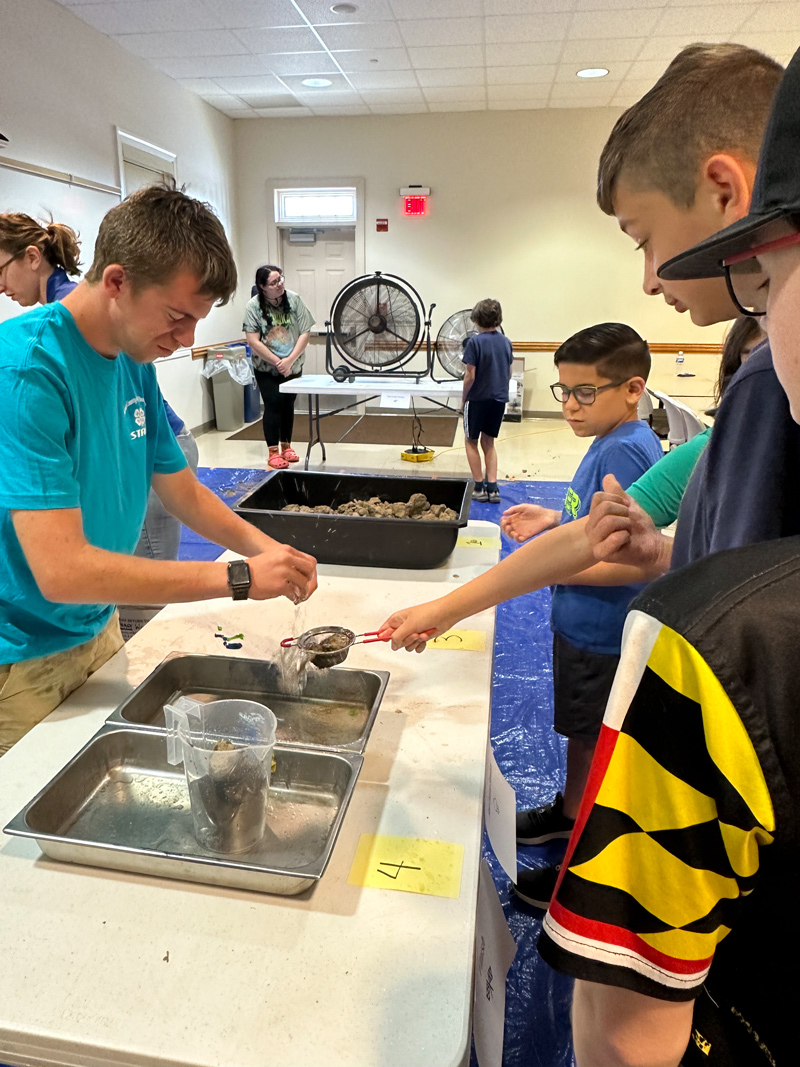
At the water erosion station, a camper held a soil sample over a basin while another popped a water balloon from above. They compared the collected soil runoff and water quality with and without the protection of a cover crop.
“At the end of the activity, they compared which water was dirtier and which soils had more wind erosion,” Henrickson said. “After all the chaos, we had them step back and see what kind of mess each soil made.”
A large blue tarp covered the floor to catch all the turbulence and mitigate the mess.
“I learned that cover crops like beans [legumes] and grasses help soil survive wind better and prevent erosion,” said Coleson Jestice, a member of the Sycamore 4-H Club located in Laurel, Delaware.
“Working with younger age groups was really fun, it forced us to look at what we are teaching — and challenged us to teach it in a way that is more hands-on,” Henrickson said. “It was fun to get into their minds and hear what their takeaways were.”
The cover cropstacle course aligned perfectly with 4-H’s motto — learn by doing.
Conceived in 2019, the Experience Extension Day Camp adopted a new format, led by Jill Jackson, 4-H agent in Sussex County. One goal for the camp is for people of all ages to learn more about Delaware Cooperative Extension. Throughout the week, campers met extension agents and specialists, gaining insight into the careers and areas of research or service that Cooperative Extension provides in Delaware communities. In addition to projects with Koehler’s team, campers flew drones, learned about beekeeping and native plants, toured the demonstration garden, evaluated food labels, planned healthy meals, learned about the poultry industry and suited up in biosecurity protective gear.
“The cover ‘cropstacle’ course was a very innovative activity to help the campers understand what erosion is and how to prevent it using different kinds of plants,” Jackson said. “Alyssa’s knowledge, along with the enthusiastic input of her graduate students and interns, made this workshop a success.”
Contact Us
Have a UDaily story idea?
Contact us at ocm@udel.edu
Members of the press
Contact us at 302-831-NEWS or visit the Media Relations website

